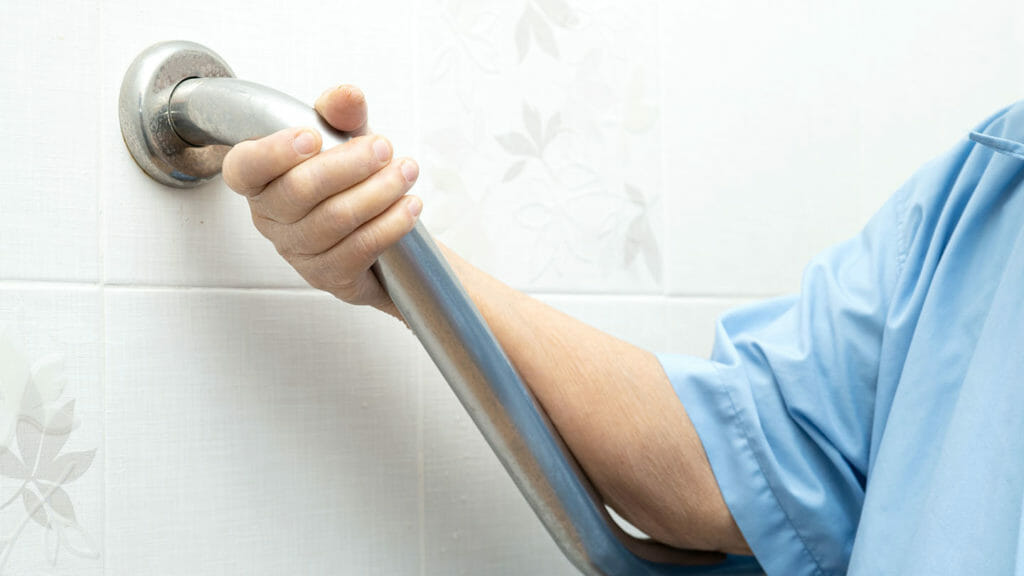
Including staff members in the conversation is the top recommendation in a paper outlining guidance to providers on purposefully designing a safe environment to prevent falls in senior living communities.
Falls among older adults are the leading cause of injury and death among adults 65 and older, according to the Centers for Disease Control and Prevention, elevating the importance and effects of ways to reduce incidence in senior living, the author said.
Accora released the white paper, “Falls Prevention by Design,” to guide providers on how to purposefully design safe environments to prevent falls. The recommendations include the use of color contrasts, lighting and textures, as well as advice on room design and information on costs and common design mistakes to avoid.
Including staff members from the therapy and activities staff members as well as certified nurse assistants, is critical, the authors said. Spaces, they said, should balance aesthetic form, safety and clinical needs.
Contrasting colors, lighting help
Although calming colors such as blues and greens are popular in senior living spaces, the authors noted that it is important that those colors, if used, be combined with contrasting colors. Older adults, they said, are less able to discriminate against some colors, especially cool colors such as green, blue and violet.
“Using contrasting colors for floors, walls and furniture can reduce falls by allowing residents to detect changes in their environment,” the paper reads.
Lighting is another important consideration, the authors said, because the typical 60-year-old needs three times as much light as a 20-year-old to properly distinguish color and contrast. Because each person is different, customizable and adjustable lighting can help older adults increase the brightness of lighting for reading or reduce glare for when they are walking.
The placement of lighting to guide individuals from one room to another, as well as to alert residents to hazards or floor height changes that occur with steps and thresholds, along with automatic lighting, also can reduce the need for residents to cross rooms to access light switches.
Flooring a key factor
Flooring is a key factor in preventing falls in every senior living space, especially independent living, where carpeted surfaces make it more challenging for walking, according to the report.
Among the recommendations in the report for flooring are to use textured flooring to create friction, reduce glare and minimize slippery surfaces. For tile floors, avoid big gaps in grout lines, the authors said.
Flooring in entrances and doorways should have level transitions, and thresholds between two surfaces should be flush to allow residents with walkers or wheelchairs easier navigation.
Bedroom and bathroom hazards
Most falls in senior living communities occur in bedrooms and bathrooms, where residents spend the most time, according to the report. Among related recommendations are floor-level beds or adjustable beds to provide customizable solutions.
A big challenge in senior living communities is clutter, the authors said. Residents are expected to reduce a lifetime of possessions and memorabilia into a small space, making lack of enough storage space a safety issue, they said. Ways to improve that storage include installing wall shelves for knickknacks and photos, wall-mounted televisions and drawers in closets.
In bathrooms, along with suggesting the provision of ample space for wheelchairs, the paper recommends working with an occupational therapist to determine towel rack and grab bar placement. For showers, roll-in units with no thresholds are best, the authors said.
“We need to think about how people are going to naturally want to move through their environment, and then make sure that the environment is organized in a way to support that safe movement,” according to an occupational therapist quoted in the report.


